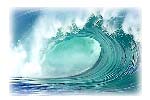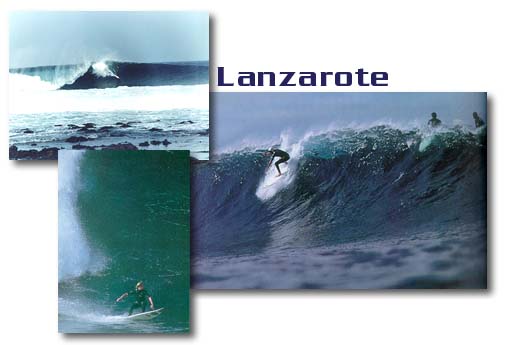
 Home
Home
The Canary Islands are a volcanic island chain in the Western Atlantic Ocean just off the coast of Morocco. A protectorate of Spain, located at 28N, they receive the brunt of the ground swell activity from hellacious winter storms in the North Atlantic, and have aptly been termed, the Hawaii of the Atlantic. The surf varies from punchy, to heavy, to downright critical. Prime season is the Northern Hemisphere Winter, November-March when waves commonly reach heights ranging from 6-15ft (backs), and seldom drop below head-high. With predominant winds blowing from the East, and most of the spots facing a broad NW direction, the result is offshore perfection and lots of barrels! The highly indented coastline has created a variety of breaks ranging in difficulty from intermediate to expert, so everyone can find their dream spot here.
CLIMATE:
The
Climate is best described as perpetually comfortable, regulated by
an Atlantic cool stream and continuous trade winds. Much like the Southern
California coast in the summertime. Daytime highs are in the 70s in the
winter months and well into the 80s in the summer. Nights are cool but
not cold. Water temps average 68F in winter, 75F in summer. A short-sleeve
fullsuit and booties is the appropriate amount of rubber and protection
for the average winter surf session. There is no humidity, no bugs, no
life-threatening diseases, no dangerous animals in or out of the water,
no 3rd world political problems, little crime, and generally nothing to
worry about except making the wave and deciding whether your first drink
of the night is going to be a Heineken or a Tequila Sunrise.
The climate here during the winter months is subtropical, with daytime air temps in the 70s and water temps in the mid to upper 60s. Nights can be cool. Rain is infrequent. Springsuit or trunks/rashguard and booties (for the sharp reefs) is the recommended surf apparel. The official language here is Spanish, however the islands are quite popular with surfers and tourists from Europe and Great Britain, so English, French, and German are fairly understood as well.
Corralejo, on the Northern tip of Fuertaventura, is the offical surf city of the Canary Islands. It rivals Haleiwa in terms of being blessed with so many world class surf spots in its vicinity. However, it is better than the North Shore in many ways because there are things to do at night here as well. Corralejo is also a major European tourist destination and has an outstanding nightlife with plenty of surf pubs, women, and other attractions.
Lanzarote Island lies just to the north of Fuertaventura, and is easily accessible by ferry. It rivals Fuertaventura in terms of the number, power, and diversity of surf breaks and makes for an excellent side trip adventure.
Lanzarote lies in the far Eastern Atlantic at 29N, 14W, 70 miles off the southern coast of Morocco. Formed by volcanic eruptions, the very earth is turned inside out here. The landscape is like the moon. "What the fuck is this place?" is the standard first reaction driving across the lava fields straight off the 20-hour plane ride from LAX. Yet, its circular flows of lava into the sea in recent geological epochs, and its fortunate location on the fringes of the North Atlantic storm track, have created one of the most surf-rich islands on the planet. Lanzarote has been in the surf mags before (see OLVIDADOS with Tom Curren in the August 98 SURFER) but the name has always been disguised.
In the winter months, generally October-April, the surf on Lanzarote ranges from overhead to triple overhead life-threatening bombs. The lack of a continental shelf here means island power, long period ground swells coming straight out of deep water and breaking on shallow coral reefs (although there are also some beachbreaks). The extremely indented coastline on the NE, N, and W coasts of the island virtually assures offshore conditions in almost any wind. The Slab is Lanzarote's answer to Pipeline/Backdoor, and it answers well. If anything, the wave is ledgier and more dangerous than Pipe, with huge inside boulders. In the same bay on either side are two other world class breaks, El Quemao, a big, power left, and La Santa Right, a bowlier, Rincon-like wave.
The wintertime surf over here is extremely heavy and critical, comparable in every way to the North Shore of Hawaii and there is a definite lack of beginner and intermediate surf breaks. Lanzarote will challenge your surfing. A minimum of 10 years experience in solid surf is a prerequisite if you want to really challenge the wintertime surf here. Many of the spots are mandatory helmet. Be careful getting in and out of the water, as the reefs can be slippery, uneven and treacherous. Mandatory booties at most spots. Watch out for the locals at THE SLAB. Elsewhere, localism and crowds are not much of a problem.
The summertime surf (May-September) is a lot mellower on the whole and can be ideal for learning, especially at the beachbreaks.

 Home
Home